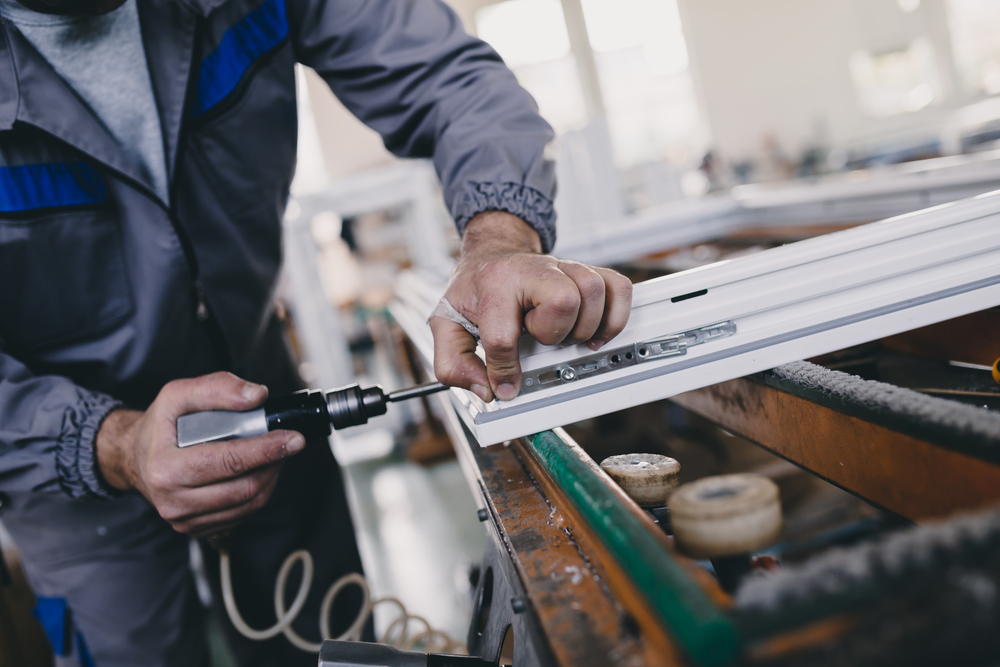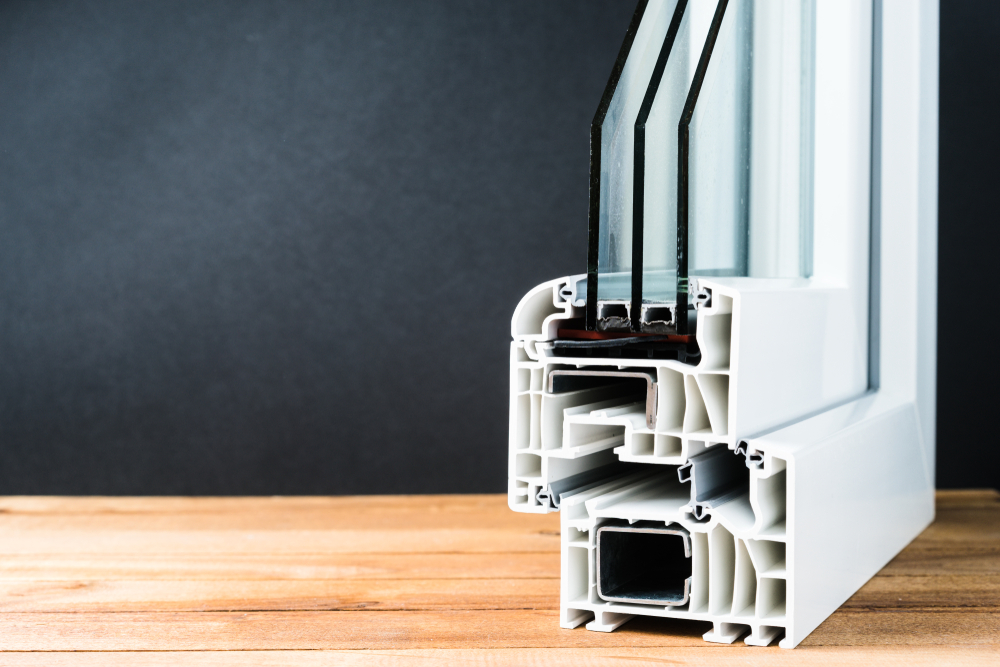Having your home or property fitted with double glazing windows and doors is high on the priority list when it comes to home improvement. While some may consider this improvement costly, the expenses pay for themselves in the long run due to the money saved on energy bills and the amount of value these upgrades will add to your property. Furthermore, with the many design options and additional features such as handles, decorative glass and wood variations, there’s no doubt that double glazing is a stylish and practical addition to any home.

Your home will also be more secure when fitted with updated windows and doors. When considering double glazing for your home, you may be curious about how double glazing successfully achieves what it is designed for. Double Glazing Vs Triple Glazing is a debate that has lasted for a while and will continue for a lot longer. If you want to find out if Double or Triple Glazing is best then check out that super handy blog.
So, the question is, how does double glazing actually work?
Double Glazing Utilises the Power of an Air Gap or Gas Combined with Glass to Work Efficiently for Your Home
As the name suggests, double glazing is fitted using two detached panes of glass. These two glass panes are separated by an air gap or gas between the two. This air gap functions as insulation. The second layer of glass acts as a barrier to noise pollution and sound from outside your property. Therefore together, vacuum gas or an air gap combined with double-paned glass provides an efficient solution to reducing heat loss and noise pollution in your home.
The second layer of glass also serves to strengthen your windows (or doors) and improves the overall security of your home, as double glazing is much sturdier and more difficult to break than a single-paned window.
Your windows and doors will also be sufficiently strengthened against outside forces such as damaging weather and storm occurrences, meaning they’re less likely to break.
Double glazing works using the same logic as cavity wall or loft insulation, in order to better maintain the heat in your home.
The air gap maintained between the two panes of glass is much too small to allow air to properly circulate. This means that heat transfer via convection is prevented. Convection is when heat is transferred due to a large number of molecules moving within a gas or a liquid. In this case, the molecules do not have enough room to move within the air gap. This forces the air to become trapped and therefore reduces heat loss through the window – which is great news for your home.
How is Double Glazing Made?
A double glazing window is fitted using the two panes of glass, a spacer bar and the relevant seals to form a fully functioning airtight environment. A space bar – or profile – is a hollow aluminium framing tool which serves to separate the two glass panes which make up a double glazing window. This spacer bar needs to be bonded to the glass using the relevant seals mentioned and ensuring that the cavity is airtight. Therefore, every tool involved in the making of a double glazed window is crucial in the overall success of the product, and each one relies on the other.
What determines the product’s final level of ability in terms of energy saving, heat insulation and noise prevention, is the width between the two panes of glass, which filling has been used for the space (dehydrated air or gas) and the type of spacer bar used.
How is the Cavity Space Filled?
This is done under vacuum conditions. The space is filled with air or inert gas to complete the double glazing window’s ability to improve insulation. The filling of this cavity also helps to prevent condensation within the panes of glass.
The size of this cavity can be anything from 4 to 20 mm, but is dependant on the filling used for the cavity (air or gas) and the type of window being made. There is a recommended cavity size for both dehydrated air options and argon gas options to achieve a Low E energy rating. This is 16mm for dehydrated air, and 14mm for the argon gas option.

In terms of the recommended cavity width to best reduce noise disturbance, this is dependent on the specific property and its requirements and can be analysed during a survey of your home to find the best option for this.
Inert Gas or Dehydrated Air Can Be Used for the Space Between Glass Panes
When dehydrated air is used in the space or cavity, the physical properties of the air allow it to lose less heat via convection and conduction than a normal, non-dehydrated air would. This is why normal air is not an option for the space between the two panes of glass. This is due to the molecules of dehydrated air being less mobile and active, resulting in a lower thermal conductivity rate. Furthermore, the physical properties mean it also conducts less noise due to the low mobility of the molecules, resulting in a great option for sound insulation as well as heat.
These benefits can be improved by opting for inert gas instead of dehydrated air. Inert means that the gas is chemically inactive. The most popular choices of inert case in regards to double glazing production are argon, xenon or krypton.
Argon gas is one of the most popular vacuum gas options to fill the space between double glazed windows. Argon gas is a very poor conductor of heat, which means it’s the perfect option for insulating your home. The layer of argon gas means that any heat produced in your home will stay put rather than escaping through the windows. The reason argon gas is such a poor conductor of heat is because it has 34% lower thermal conductivity than normal air.

Argon-filled double glazing units, as you would expect, cost more than air-filled options. This increased cost is around 5% more than air. The increased cost is due to the higher quality and the improvement argon offers in terms of a double glazing window’s energy efficiency.
Furthermore, the lifespan of argon gas should match the life of the double glazing window itself. Over a period of 25 years, argon gas should not lose more than 5% of its capabilities.
Despite the fact that krypton and xenon are more energy efficient than argon, it is rare to have these particular gases used due to the fact that they are more expensive compared to argon. Argon is therefore the most cost-effective gas which works efficiently with double glazing units.
However, in some cases, krypton and xenon may be required instead of argon. This could be due to a very specific or bespoke job, or when a limited width is available. An example of this could also be the use of windows in very old buildings. Yet, wherever possible, argon is the first choice.
What About Noise Reduction?
Double glazing won’t completely block all noise from outside, but it will significantly reduce it. If you live in a relatively quiet area anyway, then you may feel as though all noise has been completely blocked, leaving you with relaxing silence and tranquillity in your home.
However, if you live in an area where you are subject to a lot of outside disturbance such as traffic, then you may need to consider alternative routes of noise reduction. You can opt for a higher standard of double-glazed windows which may improve the problem better than regular double-glazing.
The amount of noise which double glazing can successfully block is dependent on the vent size and age of the windows in your property.
To Conclude
The entire process of double glazing, from production to fitting, is designed with your home efficiency in mind. Double glazing’s technical features mean that the benefits for your home include heat insulation, reduction of noise pollution and extra security for your property. The way this is done is through choosing the correct size and width of glass panes for your windows, and an option of dehydrated air or inert gas – most popularly, argon gas.
A lot of homeowners and property developers may choose to install their double glazing in stages. Some homeowners, for example, may choose to install double glazing in the bottom half of their house before the top, due to budget restrictions and the need to save. Naturally, any steps you make to ensure your home is more energy efficient will be a plus, so even if you cannot afford a full refit of double glazing in one go, even just one level of your house will make a significant difference.
If you require more information regarding how double glazing works when professionals come to install it in your home, you can ask them to explain specifically how the windows you have chosen will help your home’s efficiency and how precisely they function. You can also ask for advice on how to get the best out of your double glazed windows and doors, and enquire regarding warranty and aftercare options to make sure that the lifespan of your double glazing is at its optimum.
